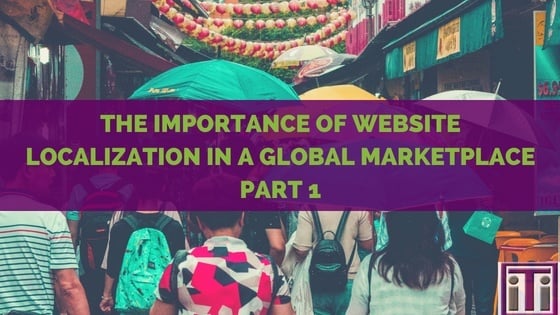
Are you considering taking your business global?
Whether you sell a product or a service, exporting to countries outside of the US has countless benefits.
But, wait…
When was the last time you assessed your digital strategy? You’re going to need one to be successful.
How will people buy from you if they don’t know that you exist?
In this first installment of our two-part series on “The Importance of Translation & Localization In A Global Marketplace”, we will assess the current makeup of the global online audience. You’ll learn that English surprisingly isn’t the #1 language used online and why it’s important to translate your digital content to attract audiences in different countries.

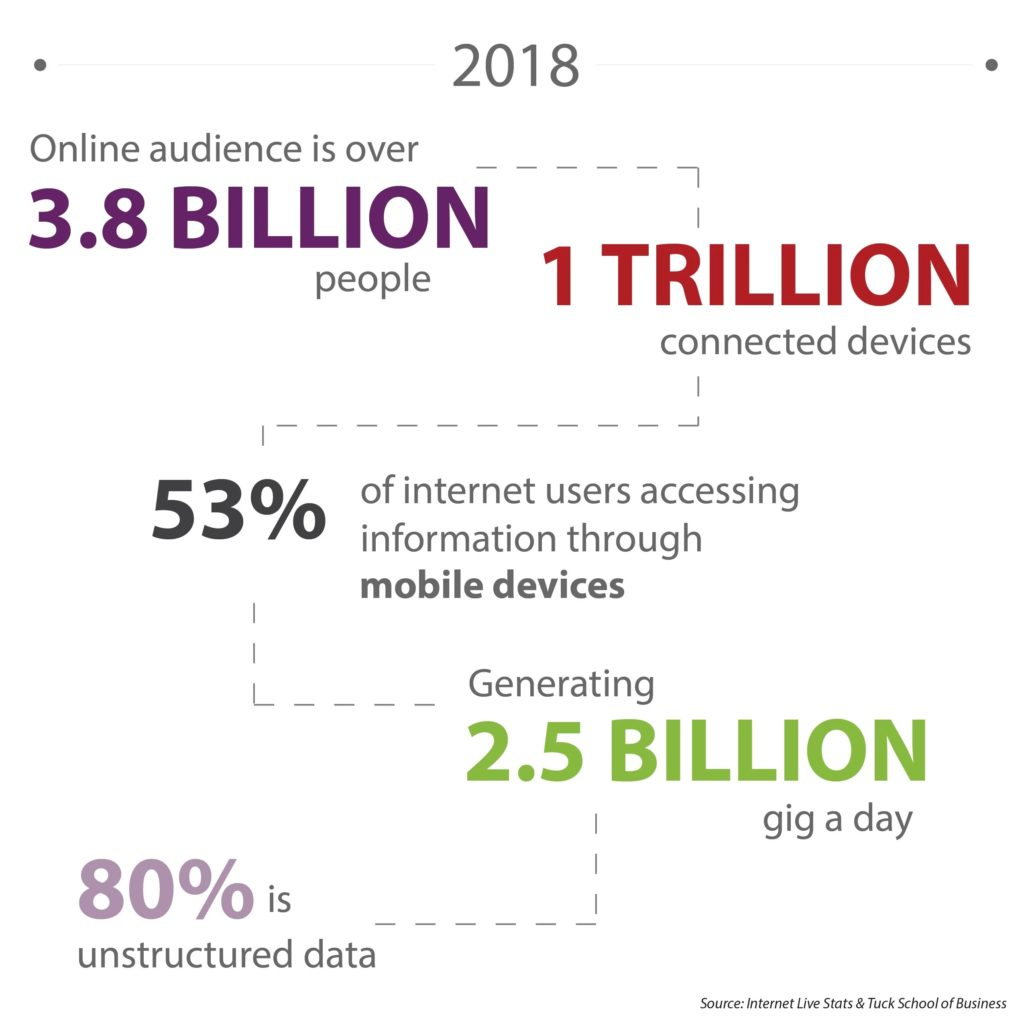
The worldwide online audience is comprised of over 3.8 billion people with 1 trillion connected devices.
Think about it:
How many devices do you currently have on you?
Just about everyone has, at the very least, a cell phone and a computer. Most people have more than one cell phone, perhaps both a personal laptop and a work desktop. Maybe even a tablet! People are connecting to the internet through a variety of devices.
53% of internet users are accessing the internet through mobile devices and you can bet that this percentage will continue to rise as more of the developing world comes online.
Main takeaway: Make sure your website is optimized for mobile!
According to a study done by Microsoft, of the nearly 4 billion internet users, over 2.5 BILLION gigabytes of data are produced per day with 80% of that being unstructured.
Unstructured data is comprised of things like blog comments, social media posts, anything that doesn’t have a pre-defined data model or is not organized in a pre-defined manner.
What does this mean for you?
That there is a tremendous opportunity for your company to be found if you present your digital footprint in a structured way.
How? Through search engine optimization, also known as SEO. SEO practices consist of structuring your website in such a way that search engines can easily determine exactly what value your site offers.
More on that in a later post, though. For now, back to the internet landscape and why translation is crucial to your global endeavors:
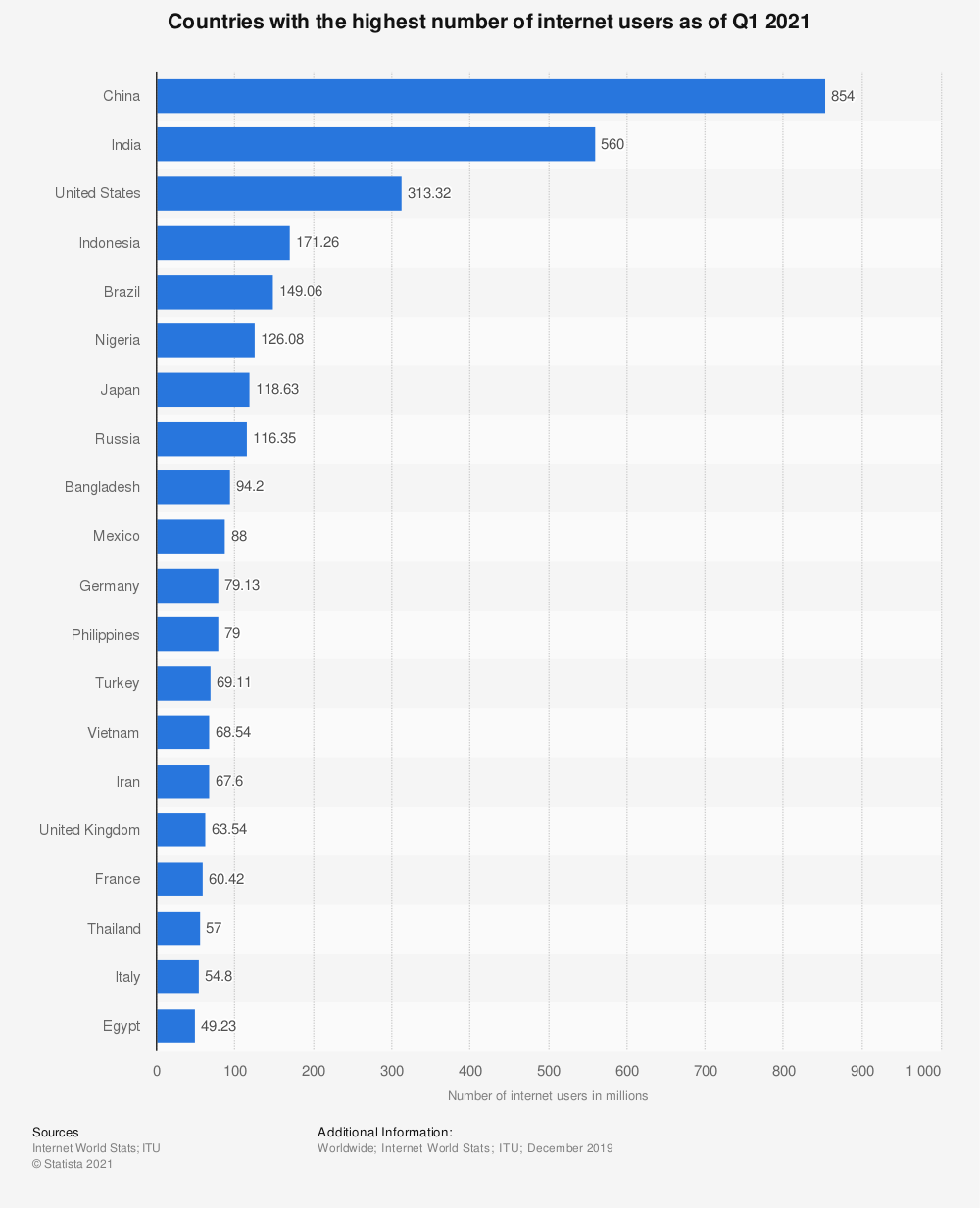
Find more statistics at Statista
The table above outlines the worldwide internet usage by country. Notice that the US comes in at #3 behind China and India. When we looked at this data 3 years ago, India was behind the US. You can bet that China and India will be dominant forces online in upcoming years as more of the population accesses the internet.
Main takeaway: English-speaking Americans no longer dominate the online space. Worldwide internet usage is extremely diverse and people are using it and searching in their native language.
If you are doubtful, let the numbers do the talking: Based on a global survey by market research leader CSA, 76% of people would choose the product or service that offers information in their native language.
A whopping 73% want product reviews in their native language. It’s pretty clear that if you want to be successful in the global marketplace, you have to translate your content and speak to your audience in their native language.
Sure, you can probably get by and still make some sales only speaking one language but think about how much money you’re leaving on the table.
In this day and age, consumers demand a custom experience while shopping. Shopping isn’t only applicable to B2C and consumer goods. Businesses are also online searching for partners, suppliers, and vendors.
Who works at these businesses and conducts the searches? Individuals. People, just like you and I.
Guess what?
They’re searching in their native language and expect a tailored experience all the same whether they are searching for new shoes or component part.
We’ve reviewed the worldwide internet usage by country, but which languages are the most prevalent?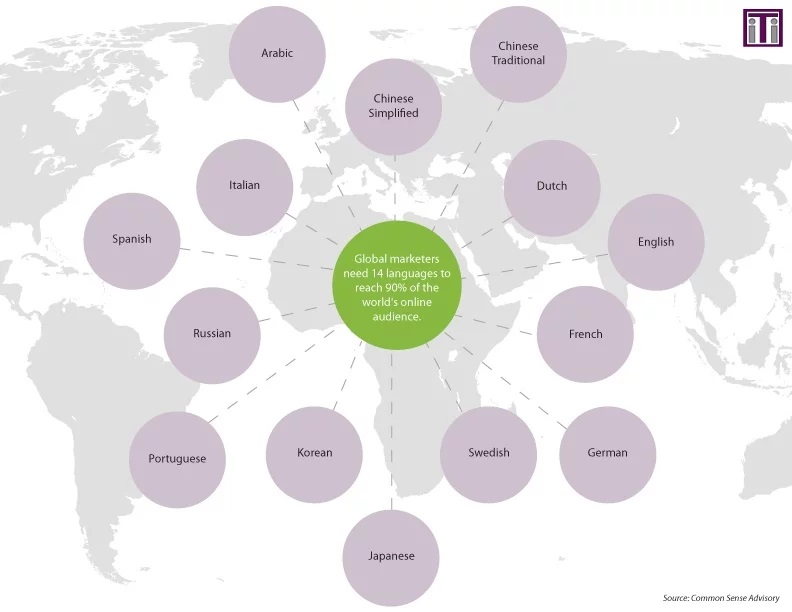
If you were to translate your website into the 14 languages listed above, you would be speaking directly to 90% of the world’s online audience.
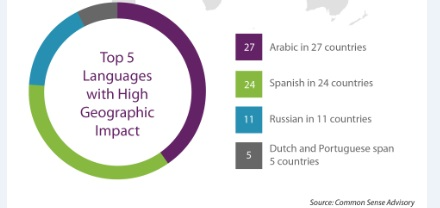
The 5 languages above have the highest geographic impact meaning that they are spoken across the most countries.
These graphs are to provide you with inspiration. You run a business and need to be strategic. Maybe you want to reach as many people as possible and then, the graphs above should be useful but if you want to be more targeted, we suggest taking a dive into your analytics if you don’t already have a specific country in mind.
Bottom line:
Decide whether you want to target a specific country OR a language.
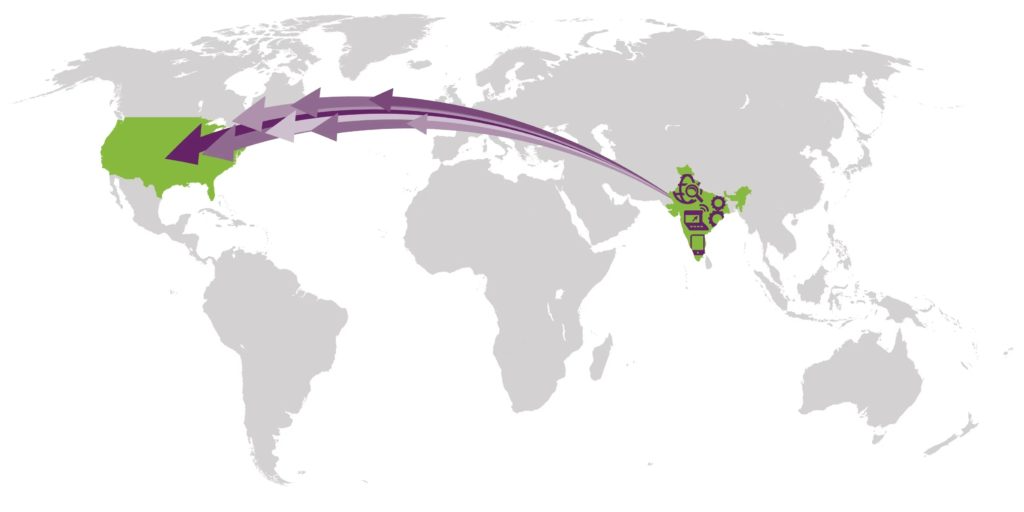
If you aren’t reviewing your Google Analytics regularly, be sure to start doing so immediately. It offers so much valuable data that will help you alter your digital strategy.
We coach our clients on the 5% Rule: If you notice that 5% or more of your website traffic is coming from another country, it’s time to take a deeper dive!
This is a great way to identify low hanging fruit for new market opportunities. If your website is only in English and you’re still getting a sizeable amount of traffic from another country, then think about how much more you can attract, while increasing your conversion rate, by translating your website.
It could even be an English-speaking country – as an example, our second highest traffic source comes from Canada on a regular basis. Either way, you may discover a new market that you hadn’t previously considered.
Companies of all types and sizes have the opportunity now more than ever to expand their reach beyond their town lines and country borders.
Customers, whether buying a bottle of shampoo or sourcing a new supplier for office supplies, are used to doing a quick online search and being presented with hundreds of options.
Because of the crowded online space, they demand a tailored customer experience.
If you want to attract clients or partners in a country outside of the US, you must provide content in their language through translation. Creating a custom and localized website will help you to stand out above the competition on the global playing field.
Read part 2 now! We dive into website localization – the perils of Google Translate for websites, how to prepare for website localization, which factors to consider for your budget and much more!
If you would like more information now, feel free to give us a call anytime for a free consultation. Or click here to download our free translation checklist to help you prepare for any project that comes your way.
This blog was updated on August 26 for freshness and relevancy
The original version of this page was published at: https://blog.ititranslates.com/2021/08/26/the-importance-of-website-localization-in-a-global-marketplace-part-1/
Our healthcare language services ensure compliance by the Joint Commission and improved patient satisfaction. iTi's suite of health language services enables seamless contact between patients and m... Read more
Top Takeaways:Study your web metricsLocalize your top pagesAnalyze the competitionBe flexible with branding You have come to the realization that localization is important ...read more
International Domains & Website LocalizationA website localization project is a complex procedure with many moving parts and considerations to manage that can vary widely ...read more
What is Localization in Translation?Localization is the process of adapting text, images, videos, marketing campaigns and more, to fit the linguistic, cultural and societal norms of ...read more
We have all seen the Google Translate fails. They are often innocent and good for a chuckle. However, in the grand scheme of things, machine translation has improved drastically and ...read more